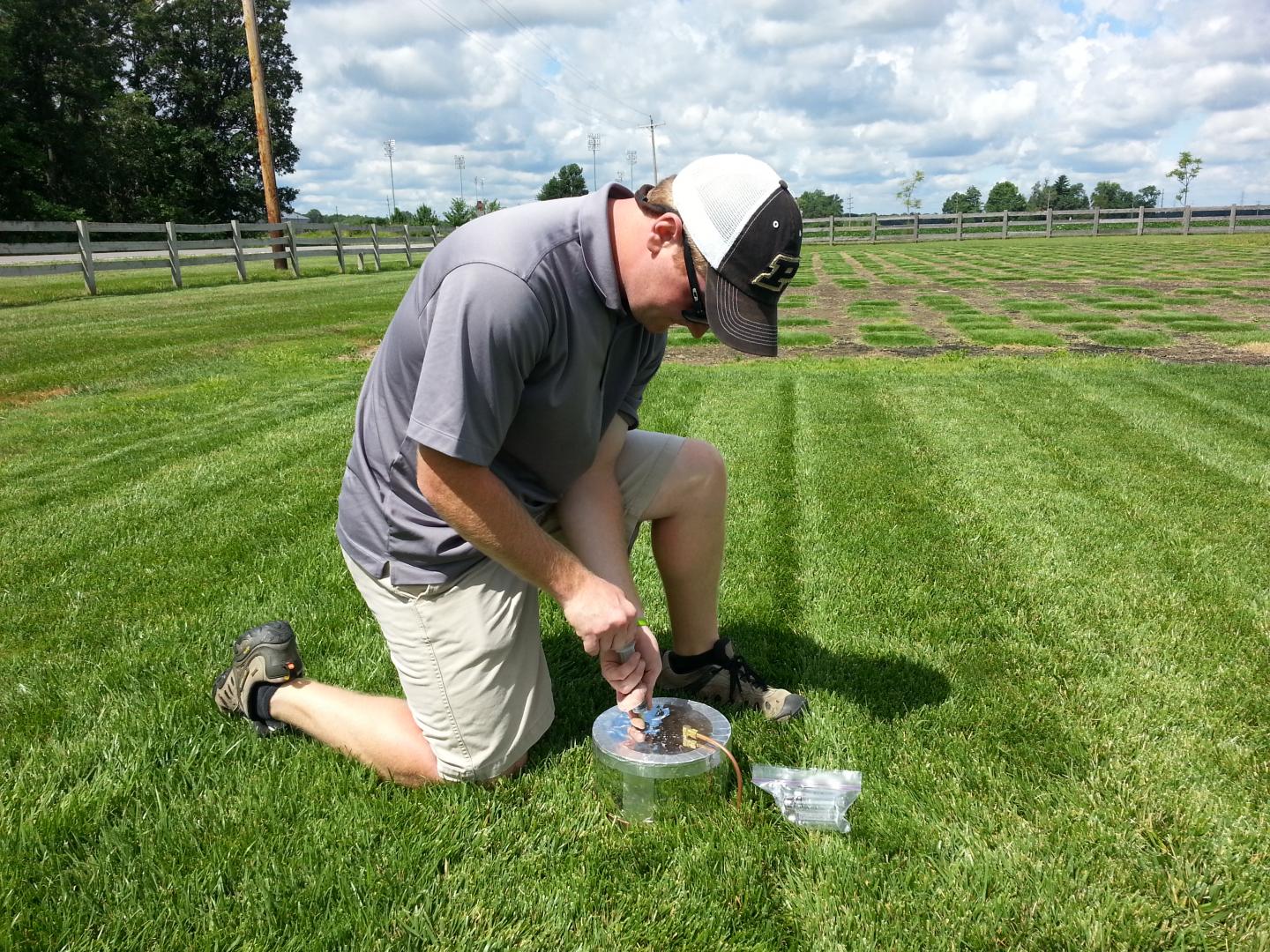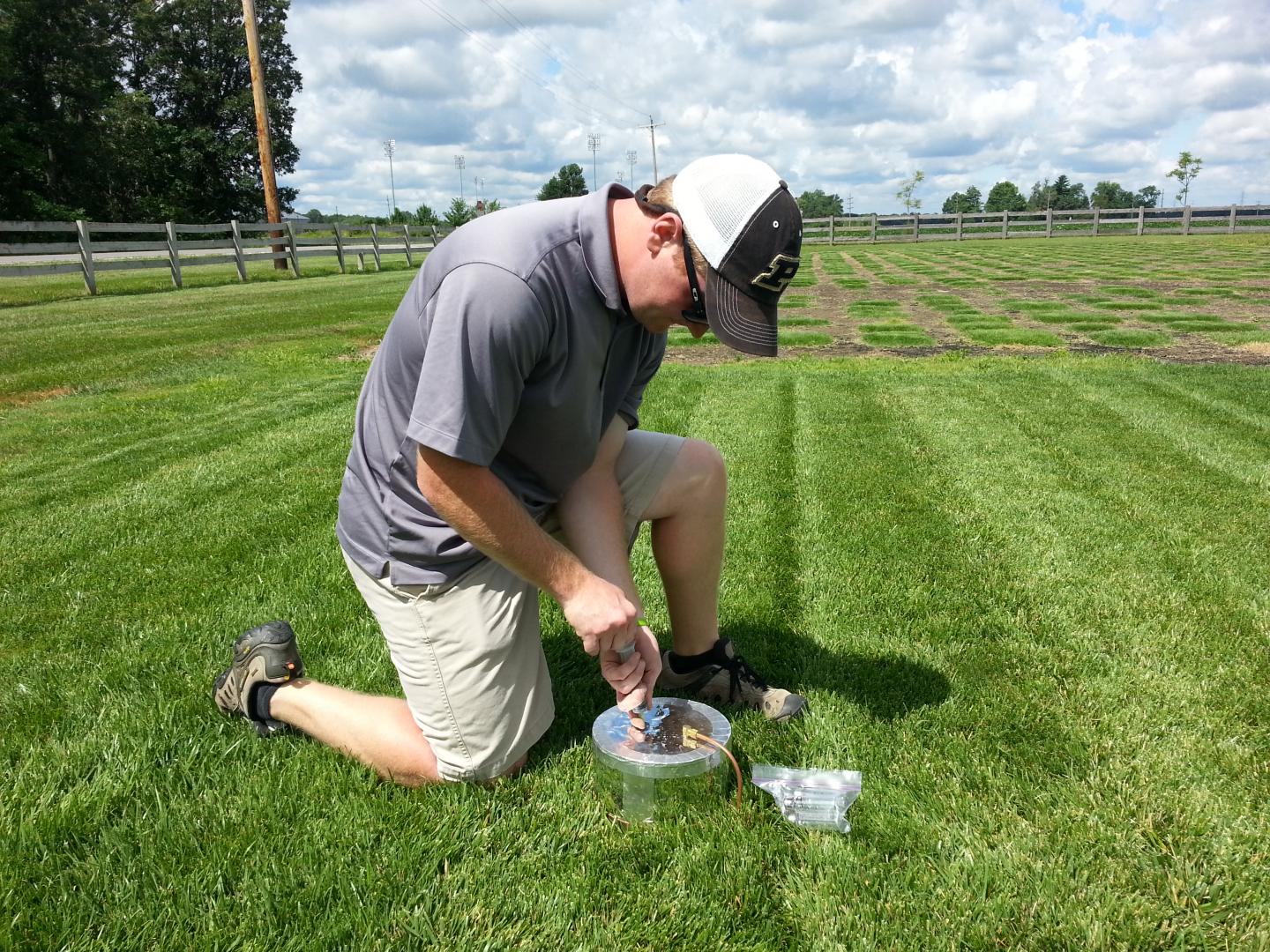
Credit: Jon Trappe
Cranking up the lawn mower on a Saturday afternoon may be a child's most dreaded chore. But little does he or she know that it also affects how much carbon and nitrogen are present in the soil below the grass.
Quincy Law of Purdue University studies many aspects of lawn care and their effects on the soil. Does the type of turf grass make a difference? Does it matter if grass clippings are left on the lawn or picked up? How frequently should people mow their lawns?
"My research demonstrates one of the many environmental benefits of natural grass lawns, golf courses, athletic fields, cemeteries, and similar areas," he explains. "Grasses are able to remove carbon dioxide, a greenhouse gas, from the atmosphere and deposit it into the soil as organic matter."
Law and his team found that the amount of carbon deposited into the soil was affected by the species of grass and how it was mown. Specifically, tall fescue resulted in more soil carbon than Kentucky bluegrass. However, tall fescue required more frequent mowing. Both are common grasses used in lawns in the United States.
"Soil is a nonrenewable resource that must be protected, which soil carbon helps to do," he says. "Soil carbon helps to bind soil particles and build soil structure. It also decreases the risk of runoff and erosion, and improves soil-water relations."
In addition, returning grass clippings increased both soil carbon and nitrogen compared to when clippings were collected. Grass clippings contain these elements and if the clippings are returned to the soil, they break down and are released into the soil.
In the soil they affect the carbon and nitrogen levels in two ways: directly by simply being present but also indirectly by serving as fertilizer for the grass.
However, Law notes it is difficult to make specific species recommendations in this area. To get more grass clippings, the grass has to be mowed more often, which can cause problems.
Lawn mowers, like cars and trucks, produce their own carbon emissions and can offset some of the benefits of increased grass clippings. Improvements in mower efficiency and alternative fuel sources may help offset the mower emissions in the future, he says.
"By carefully selecting a grass and properly managing grass clippings, homeowners can increase the carbon sequestered in the soil," he says. "While this will not single-handedly significantly reduce carbon dioxide levels in the atmosphere, it is still helpful."
For example, Law's research shows that the carbon deposited by the grass more than offsets the carbon emitted from managing the lawn and helps to justify those emissions. It can be beneficial in that it allows a way for an individual to reduce his or her net carbon footprint.
Lawns do more than look good, Law adds. They provide recreational areas as well as environmental and societal benefits. For those looking for more information about the best way to manage their turf, he says a local university extension service is a great source of help.
"I grew up playing golf and immediately fell in love with working on a golf course, so I have always enjoyed working closely with nature," Law says. "Additionally, I have a family history of farming. My brother currently farms land that has been in our family for over 150 years, and soil conservation has always been a priority. As my grandfather said, 'Harvest the crop, not the land.' "
###
Read more about research by Law and his advisor Aaron Patton in Agronomy Journal. Funding for this research was provided by the United States Golf Association and the Midwest Regional Turf Foundation.
Media Contact
Susan Fisk
[email protected]
608-273-8091
@ASA_CSSA_SSSA
http://www.agronomy.org
############
Story Source: Materials provided by Scienmag





